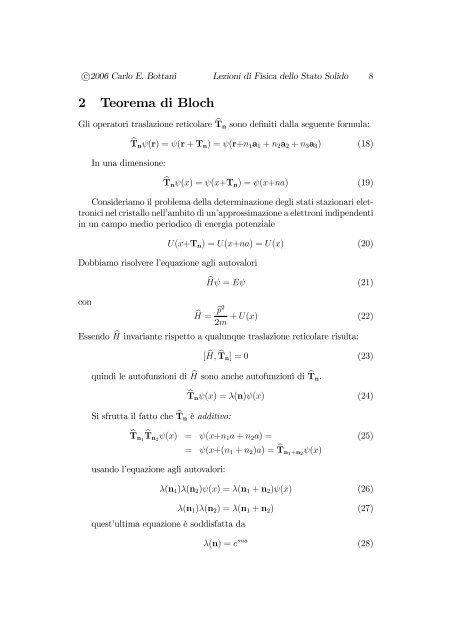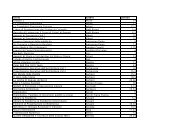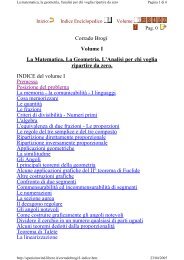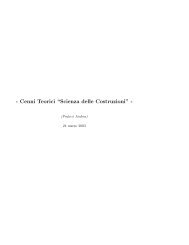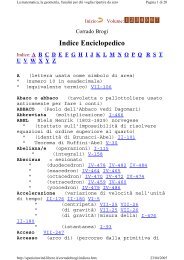Appunti delle lezioni di Fisica dello stato solido A+B - Polihelp.com
Appunti delle lezioni di Fisica dello stato solido A+B - Polihelp.com
Appunti delle lezioni di Fisica dello stato solido A+B - Polihelp.com
You also want an ePaper? Increase the reach of your titles
YUMPU automatically turns print PDFs into web optimized ePapers that Google loves.
c°2006 Carlo E. Bottani Lezioni <strong>di</strong> <strong>Fisica</strong> <strong>dello</strong> Stato Solido 8<br />
2 Teorema <strong>di</strong> Bloch<br />
Gli operatori traslazione reticolare b T n sono definiti dalla seguente formula:<br />
In una <strong>di</strong>mensione:<br />
bT n ψ(r) =ψ(r + T n )=ψ(r+n 1 a 1 + n 2 a 2 + n 3 a 3 ) (18)<br />
bT n ψ(x) =ψ(x+T n )=ψ(x+na) (19)<br />
Consideriamo il problema della determinazione degli stati stazionari elettronici<br />
nel cristallo nell’ambito <strong>di</strong> un’approssimazione a elettroni in<strong>di</strong>pendenti<br />
in un campo me<strong>di</strong>o perio<strong>di</strong>co <strong>di</strong> energia potenziale<br />
U(x+T n )=U(x+na) =U(x) (20)<br />
Dobbiamo risolvere l’equazione agli autovalori<br />
bHψ = Eψ (21)<br />
con<br />
bH = bp2 + U(x) (22)<br />
2m<br />
Essendo bH invariante rispetto a qualunque traslazione reticolare risulta:<br />
[ bH, b T n ]=0 (23)<br />
quin<strong>di</strong> le autofunzioni <strong>di</strong> b H sono anche autofunzioni <strong>di</strong> b T n .<br />
Si sfrutta il fatto che b T n è ad<strong>di</strong>tivo:<br />
bT n ψ(x) =λ(n)ψ(x) (24)<br />
bT n1Tn2 b ψ(x) = ψ(x+n 1 a + n 2 a)= (25)<br />
= ψ(x+(n 1 + n 2 )a) = T b n1 +n 2<br />
ψ(x)<br />
usando l’equazione agli autovalori:<br />
λ(n 1 )λ(n 2 )ψ(x) =λ(n 1 + n 2 )ψ(x) (26)<br />
λ(n 1 )λ(n 2 )=λ(n 1 + n 2 ) (27)<br />
quest’ultima equazione è sod<strong>di</strong>sfatta da<br />
λ(n) =e sna (28)


